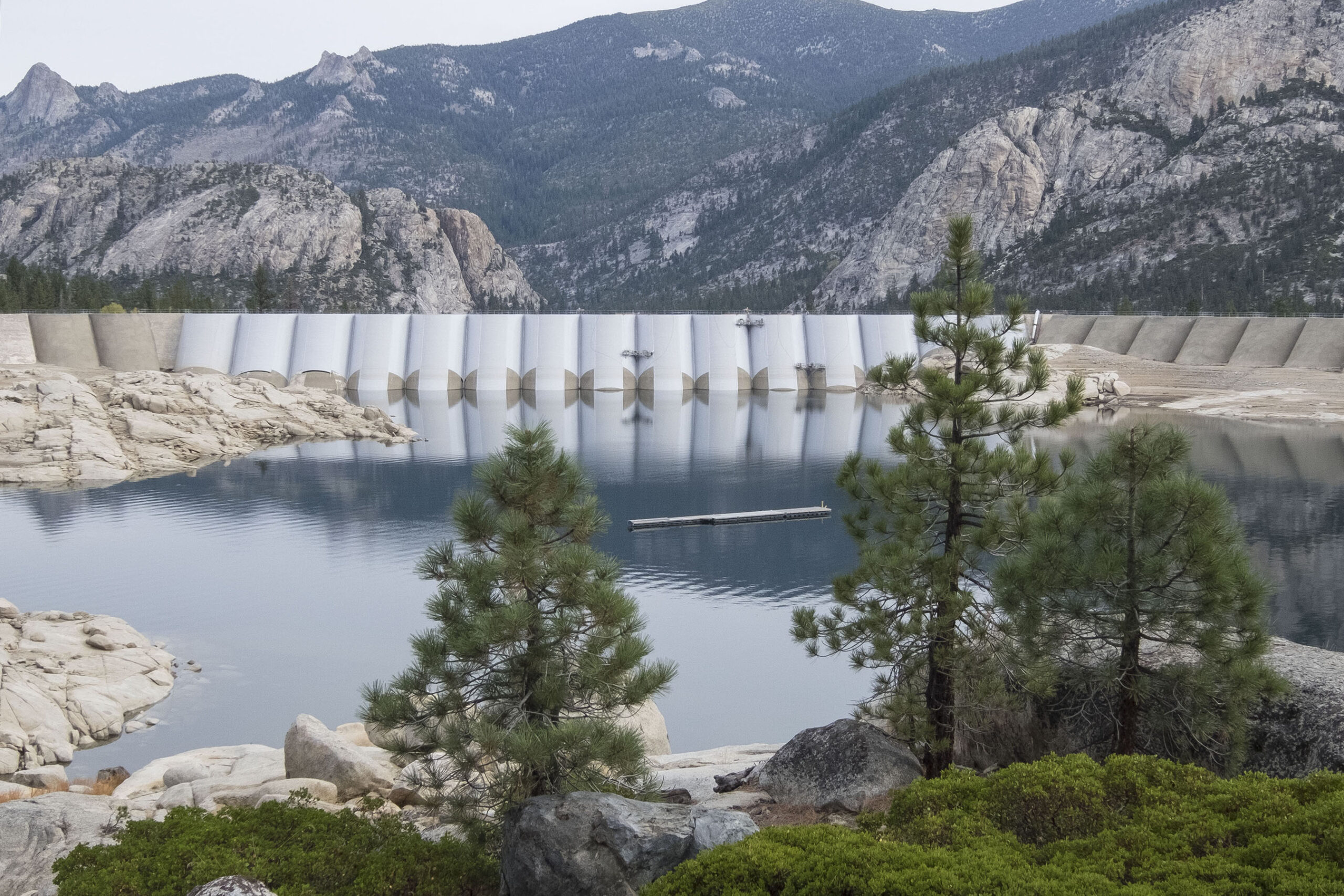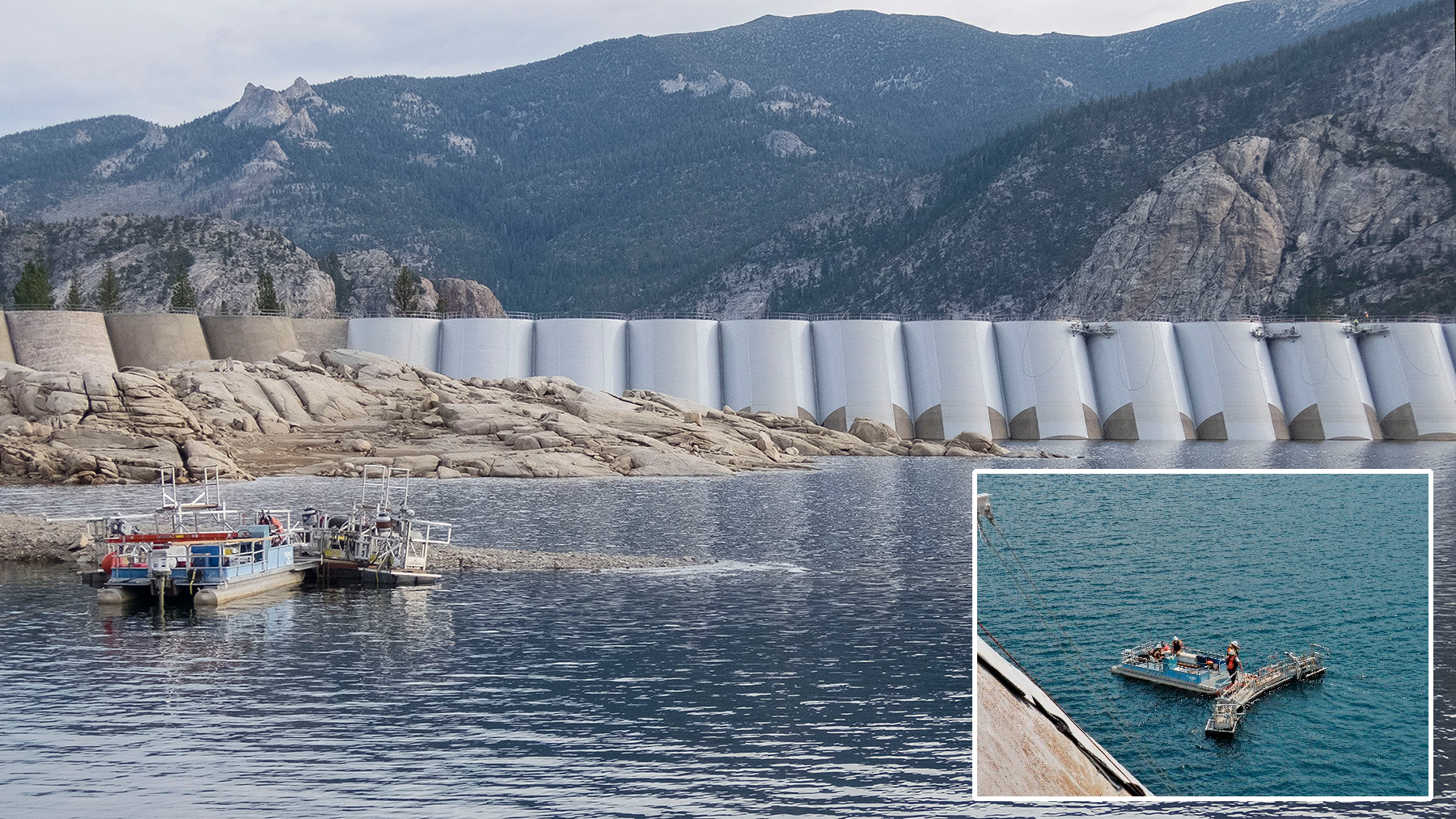
The Florence Lake Dam in the Sierra Nevada mountains of California was built by the Southern California Edison Company as part of the “Big Creek” Hydroelectric Project. The dam, sitting 7,328 feet above sea level, is 190 feet high, and the reservoir storage capacity is 64,406 acre-feet. The project, completed in 1926, provides electric power, flood control, irrigation, and recreation for the public.
Dams that were built in the early 1900s generally have a lifespan of about 80 years; with proper maintenance and spot repairs, their life can be extended many more years. Eventually, however, corrosion will take its toll, and when they start leaking, conventional concrete repair is rendered ineffective. That is where Carpi Tech and Bee Access came to the rescue.
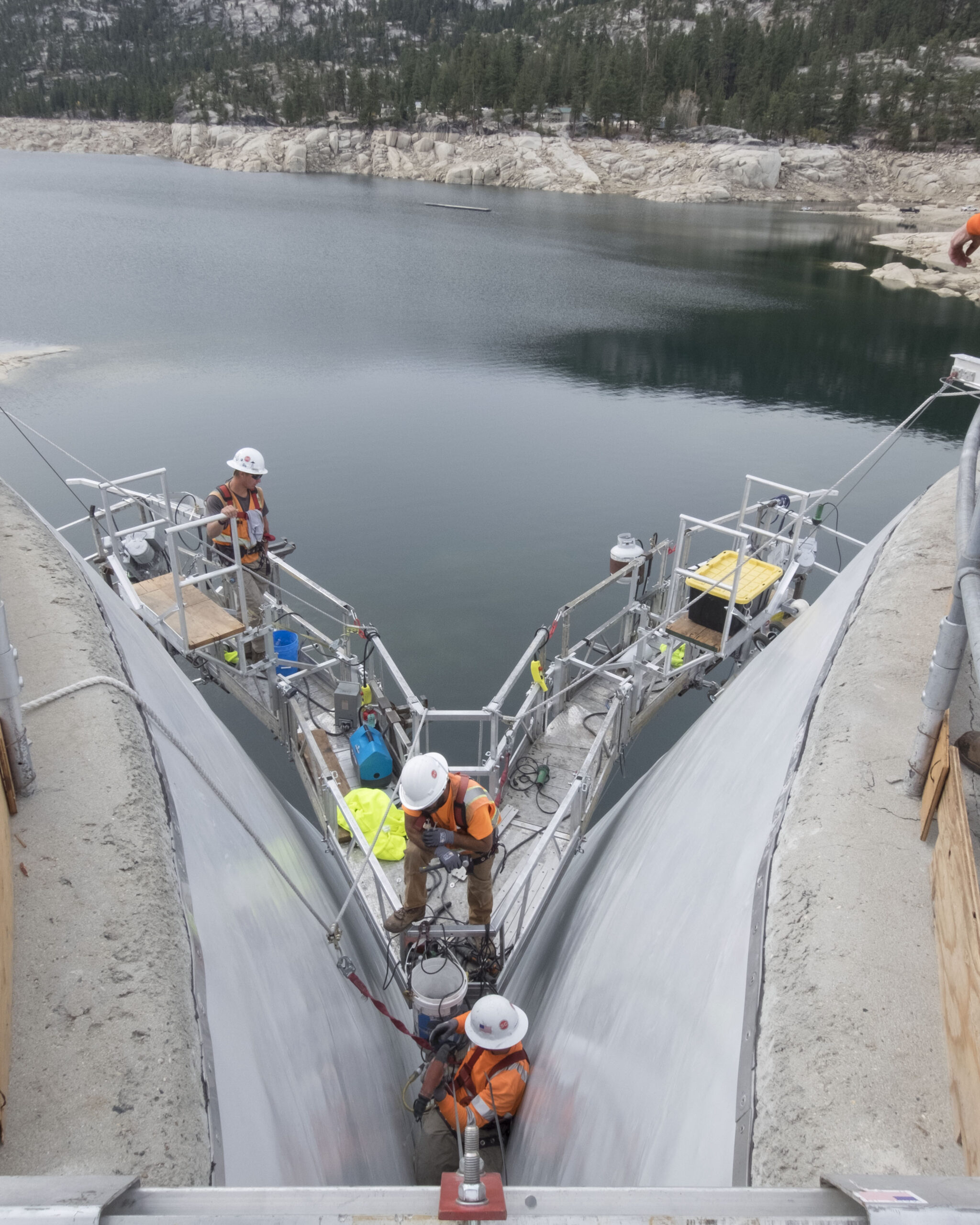
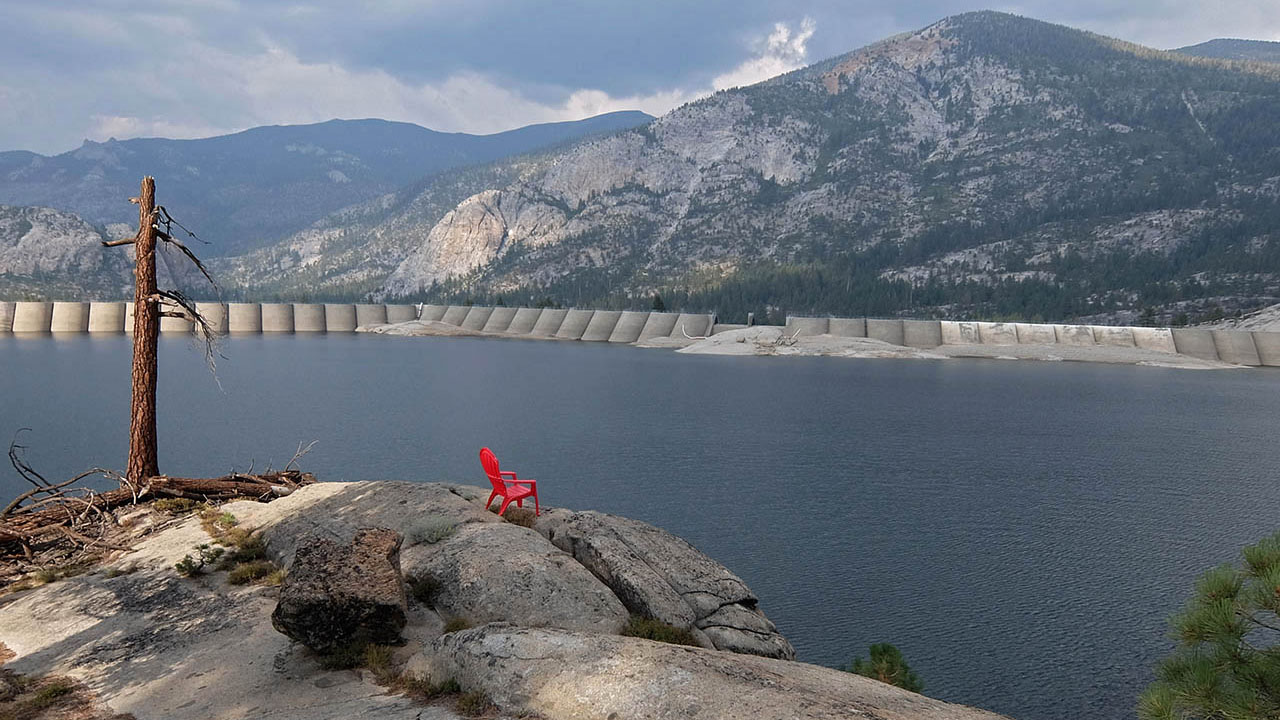
Carpi Tech, a Swiss company with several subsidiaries worldwide, including Carpi USA, has developed custom-designed geomembranes. The geomembranes are installed in large sheets stored on rolls. The sheets are pulled down from the rolls and placed on the surface with a small overlap. The overlapped seams are then welded together using heat guns and rollers to make a solid and impermeable water barrier with a design life of 50-plus years.
In 2014, Southern California Edison Company contracted Carpi USA to install geomembranes on 22 of the 58 arches of the Florence Lake Dam. Carpi enlisted the help of Bee Access Products and Elevator LLC to provide the right access solutions during this four-year project.
The Florence Lake Dam presented several unique challenges:
Bartelt worked closely with Tom Dejong and Brian Andrews from Bee Access as well as Jay Balibrea withElevator LLC to make sure their access needs were fully understood and properly designed. The plan was to do each arch in three sections. For the center section, they used a relatively standard corner platform, but with special corners and two special stirrups. For the left and right sections, V-shaped corner platforms utilizing standard components were mixed with a custom-designed V-section, special corner sections, three special stirrups, and accessories.
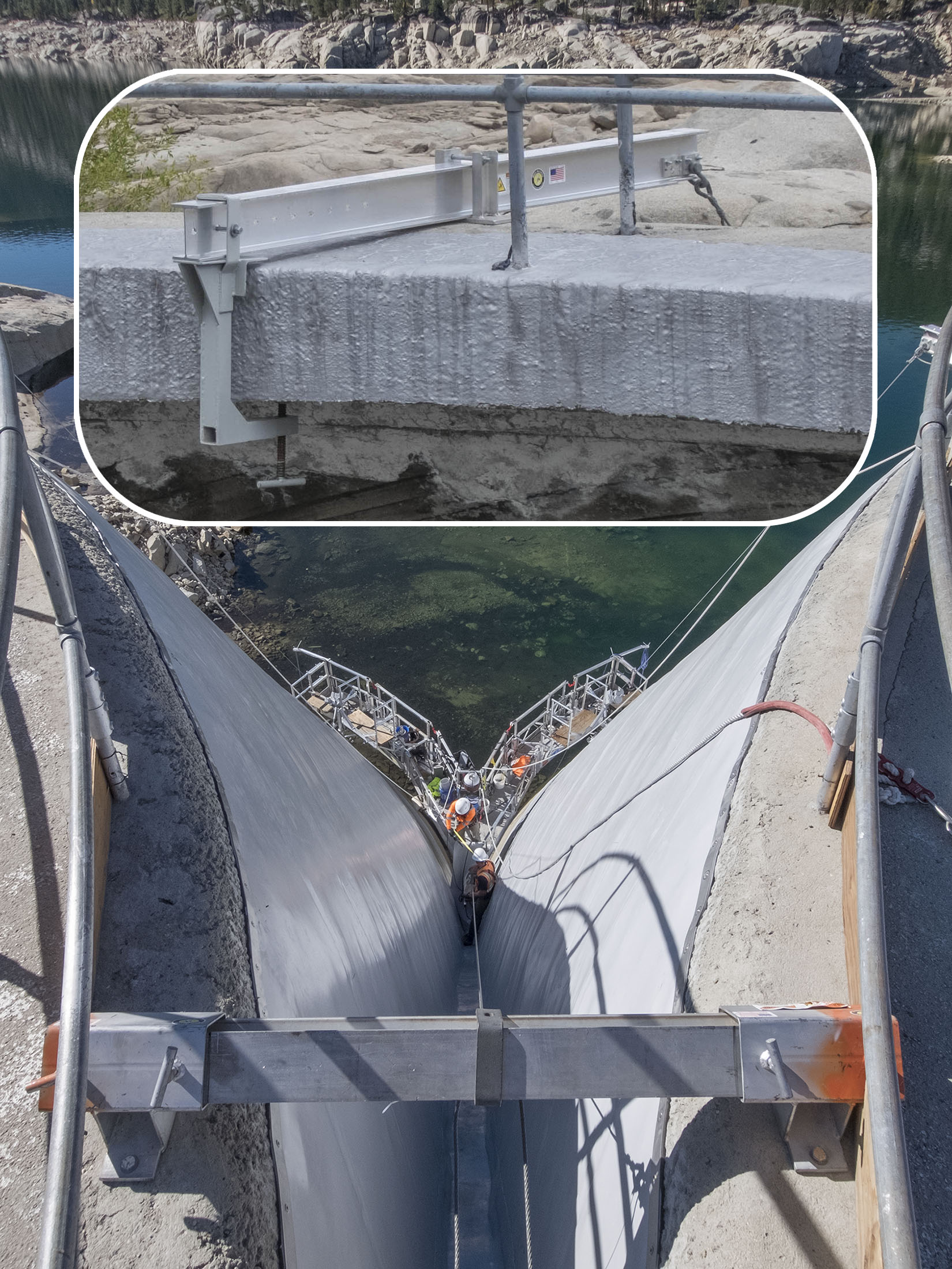
Elevator furnished the rental of standard platform components, and custom rigging equipment was designed by Bee Access to match the shape of the arches. Bee Access designed the following components from scratch using 3D modeling:

After the design phase, Bee Access built prototypes and shipped them to the site, where Bartelt and his crew conducted a mock set-up. The field trial resulted in some design and layout changes, after which the system worked as intended. Bee Access went into full production on all components and shipped everything to arrive just before work began. The Bee Access equipment has been on the Florence Lake Dam site or four years now and will continue to be used through completion this year. Bartelt and his crew have been able to access the required areas, and the job will be completed on schedule.
